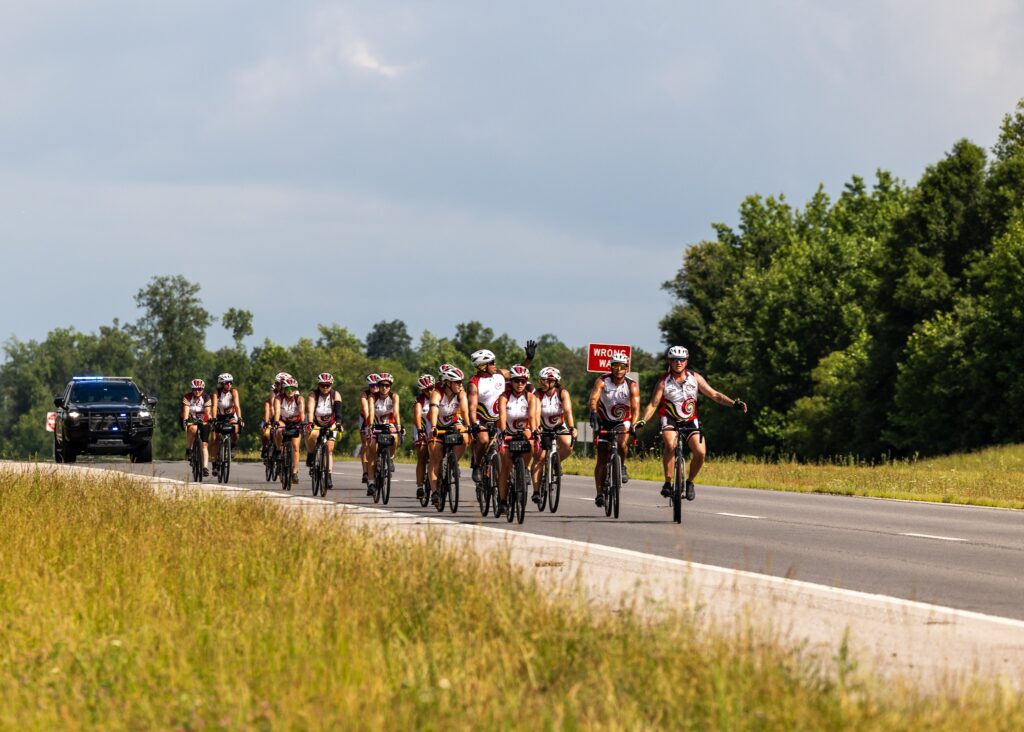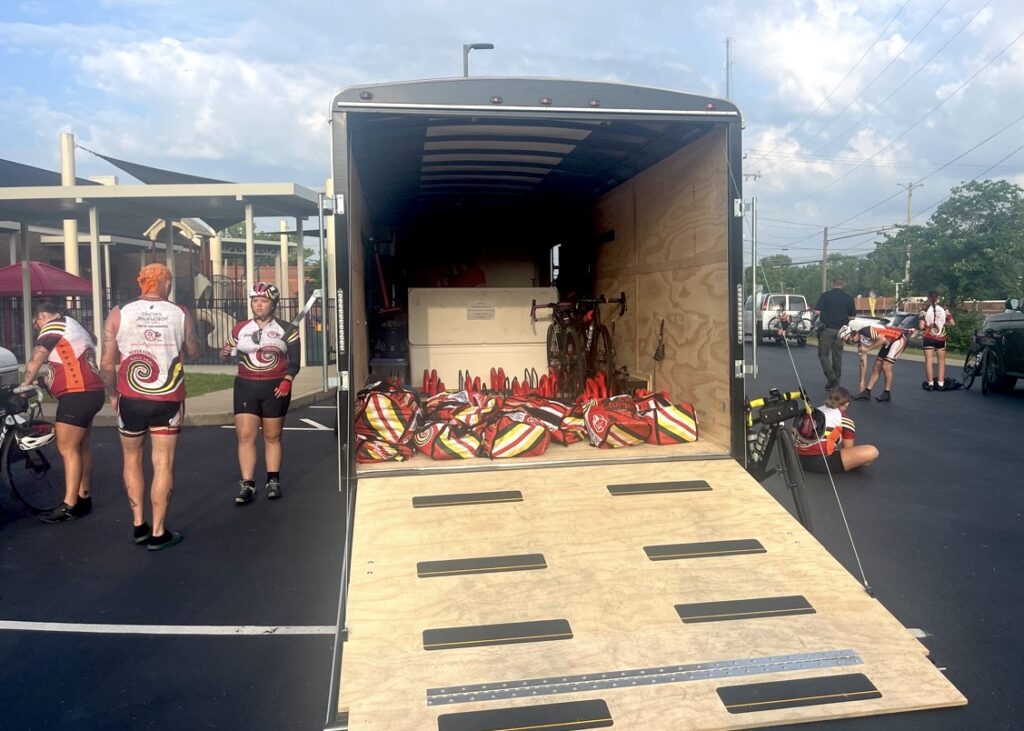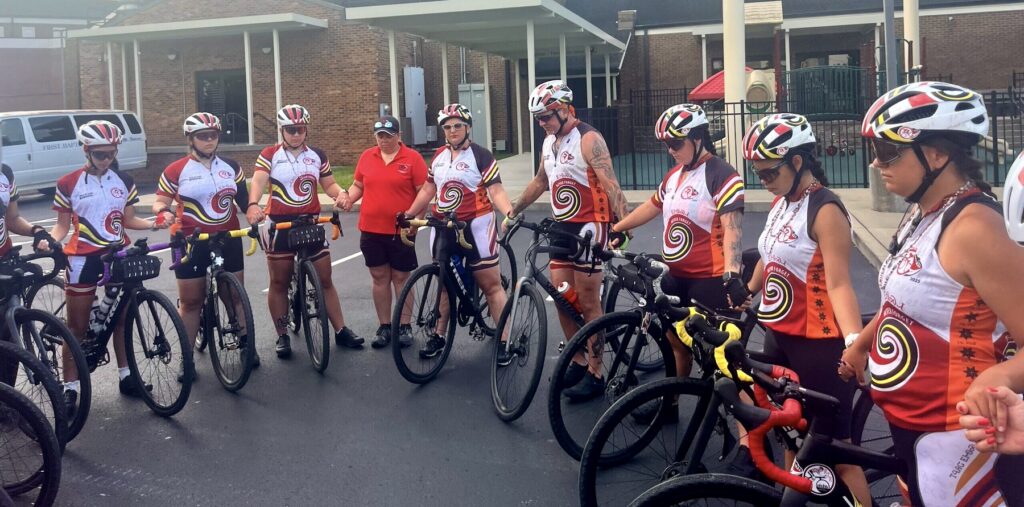
It’s just after 7 a.m. on a muggy June morning, but there’s already a buzz of activity in the parking lot of Joelton’s First Baptist Church.
Eighteen bike riders — plus support staff — are busy stretching, lathering on sunscreen, filling water bottles and checking bike tires.
The group is about to embark on the fifth leg of a 950-mile trek following the Northern Route of the Trail of Tears. The destination of the “Remember the Removal” ride is Tahlequah, Okla., the Cherokee Nation’s present-day capital. The journey begins in New Echota, Ga., which was the capital of the Cherokee Nation from 1825 to 1830, as well as the site of a contentious treaty signing that provided the legal basis for the forced removal of the Cherokee people.
More: The legacy of the Trail of Tears in Middle Tennessee
For the last four decades, a group of bicyclists has embarked on the ride in honor of ancestors who were forcibly removed from their homelands. Today, the group is comprised of two Cherokee tribes — 12 riders from Cherokee Nation, and six from the Eastern Band of Cherokee Indians.
Before making their way to New Echota, the Cherokee Nation group traveled to Cherokee, N.C., where they met their compatriots.
Baylee Gregg, one of the Cherokee Nation riders, said coming together was a highlight.
“They’ve taught us a lot of their traditional ways that we don’t always get in Oklahoma. They taught us about their traditional medicine. They’ve told us about their call that we do before every ride,” Gregg said. “It’s just been really interesting to kind of see what our people did before the removal that kind of got lost as we went over.”
That “call” has become a part of the group’s morning routine. Before mounting their bikes riders gather in a circle, clad in matching red and white kits that read “never forget.” One member leads the group in prayer, while another initiates a “war cry.”
 Cynthia Abrams WPLN News
Cynthia Abrams WPLN NewsRiders travel with various support staff, a trailer and are accompanied by a Cherokee Nation Marshal.
In Joelton, the group is coming off a difficult day: long miles, and a visit to a mass Cherokee grave in McMinnville, where recent imaging revealed that more people were buried there than previously thought. The prayer reflects that.
“We lift those up from yesterday that were newly discovered as their final resting place. At least now we know,” rider TW Saunooke prayed. “Now we carry them with us. Now they are with us as a final resting place.”
Stops at historical sites are a significant part of the ride. Chuck Hoskin Jr., principal chief of the Cherokee Nation, said the trek is about reclaiming “the darkest time in Cherokee history.”
“There, in some instances, has been a whitewashing and an almost romanticizing of that period of history,” Chief Hoskin said. “The ‘relocation’ — those sort of phrases, of course, are purposefully designed to soften the story and make it a bilateral proposition in a sense that there was some discussion and an agreement to move. So the complexity is lost, and the trauma is lost.”
A sense of urgency
Things look different today than when the first ride took place, back in 1984. The bikes are nicer; riders have more support when it comes to food and lodging. And, Chief Hoskin says, the cultural element is more important than ever.
“I think it perhaps takes on a sense of urgency today that has increased over time, and that relates to the continued erosion of our language, culture and life ways,” he said.
Training for the ride isn’t merely physical. It also incorporates history and language learning, plus diving into the riders’ own histories — like tracing genealogies.
For Gregg, her findings have been enlightening — not only for her, but to her family.
“You get a clan through your mother,” Gregg said. “So a lot of people don’t have clans anymore because they get their Cherokee heritage through their father. But I actually found that I still have a clan … and that was really interesting because my grandma didn’t really remember that.”
Yet the emotions have also taken a toll — like when riders visited Blythe Ferry in Meigs County. That was the last place along the Trail of Tears that the Cherokee people were able to see their homelands.
“As we were going across on the boat, we all just looked back and were reflecting, like, ‘Can you imagine this being the last time you see your home?’ And you don’t know when you could ever go back, if you can even go back ever,” Gregg said. “It was just a very emotional day. We all cried, but I think it brought us all together.”
The group is about a week away from reaching the finish line in Oklahoma.
Until then, they continue to start every morning the same way: joining hands, praying and calling out their war cry, together.
 Cynthia Abrams WPLN News
Cynthia Abrams WPLN NewsBefore each ride, the group prays together.

